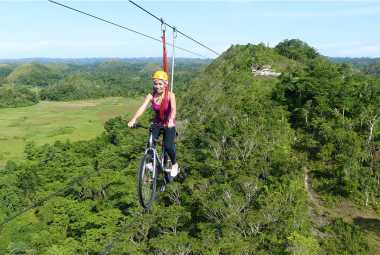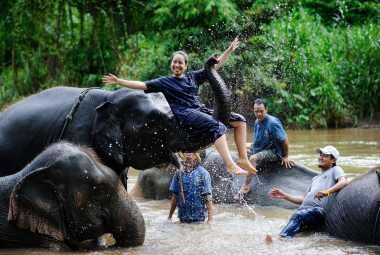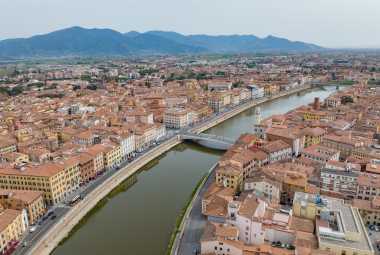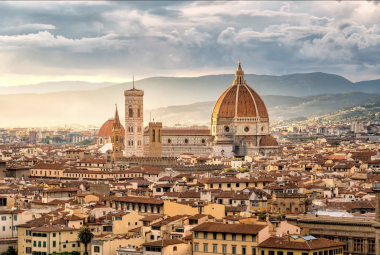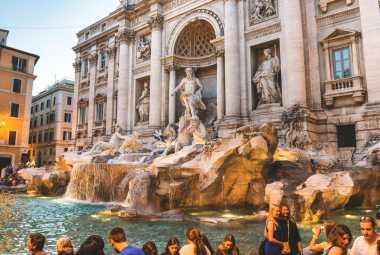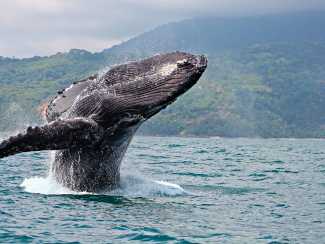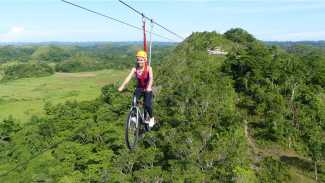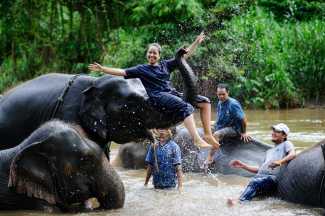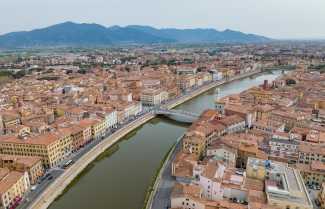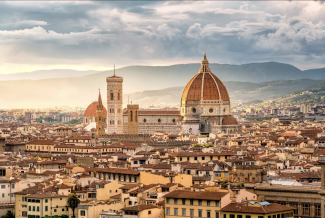Image by
*Vacation Mode is a for-profit site. It contains paid banner advertisements that are generated and managed by a third-party network. This site also includes relevant affiliate links (both in the content and on the sidebar) all of which we do our best to clearly mark as such.
The Philippines: An Enigmatic Tapestry of Nature and Diversity
Geographical Location and Topography: A Land of Tropical Beauty
Nestled in the heart of Southeast Asia, the Philippines is an archipelago composed of 7,641 islands. It is strategically located in the western Pacific Ocean, bordered by Taiwan to the north, Vietnam to the west, and Indonesia to the south. The country's geographical location blesses it with abundant natural resources and a diverse ecosystem.
Lush rainforests teeming with exotic flora and fauna, breathtaking coral reefs housing vibrant marine life, and majestic mountain ranges adorn its scenic landscape. The Philippine archipelago consists of three main geographical regions: Luzon in the north, Visayas in the center, and Mindanao in the south.
Each region boasts its unique topography. In Luzon, you'll find stunning landscapes like the picturesque Banaue Rice Terraces carved into mountainsides by ancient indigenous tribes.
In contrast, Visayas mesmerizes visitors with its pristine white sand beaches dotting islands like Boracay and Panglao. Mindanao showcases its awe-inspiring mountains such as Mount Apo – Philippines' tallest peak – which offers both adventure-seekers and nature lovers an unforgettable experience.
How to Travel the Philippines in 3 Weeks
Video by Kristi Travel Escape
Cultural Diversity and Influences: A Melting Pot of Traditions
The cultural tapestry woven throughout the Philippine islands reflects a rich fusion of indigenous heritage combined with influences from various colonizers who have left their mark over centuries. Indigenously known as "Lupang Hinirang," which translates to "Chosen Land," this nation embraces diverse ethnic groups that have shaped its cultural landscape. The Philippines has more than 170 distinct languages spoken across its archipelago - a testament to its linguistic diversity.
Among these languages are Tagalog (official language), Cebuano, Ilocano, Hiligaynon, and Bicolano. English is also widely spoken and serves as the language of business, education, and government.
The country's cultural fabric is interwoven with influences from various colonizers. From the arrival of the Spanish in the 16th century to American occupation in the early 20th century, these foreign powers have left indelible marks on Philippine culture.
Spanish influence is evident in religious practices such as Roman Catholicism—a religion embraced by the majority of Filipinos—and traditional festivities like Sinulog Festival in Cebu City. Meanwhile, American influence has shaped aspects such as governance systems and popular culture, with Hollywood movies and fast-food chains becoming an integral part of Filipino society.
With its diverse geography and cultural influences, the Philippines stands as a vibrant Asian Pacific Islander nation that continues to captivate visitors with its natural wonders and melting pot of traditions. As we delve deeper into this enchanting country's history and characteristics, prepare to be immersed in an extraordinary journey through time and culture.
Historical background of the Philippines
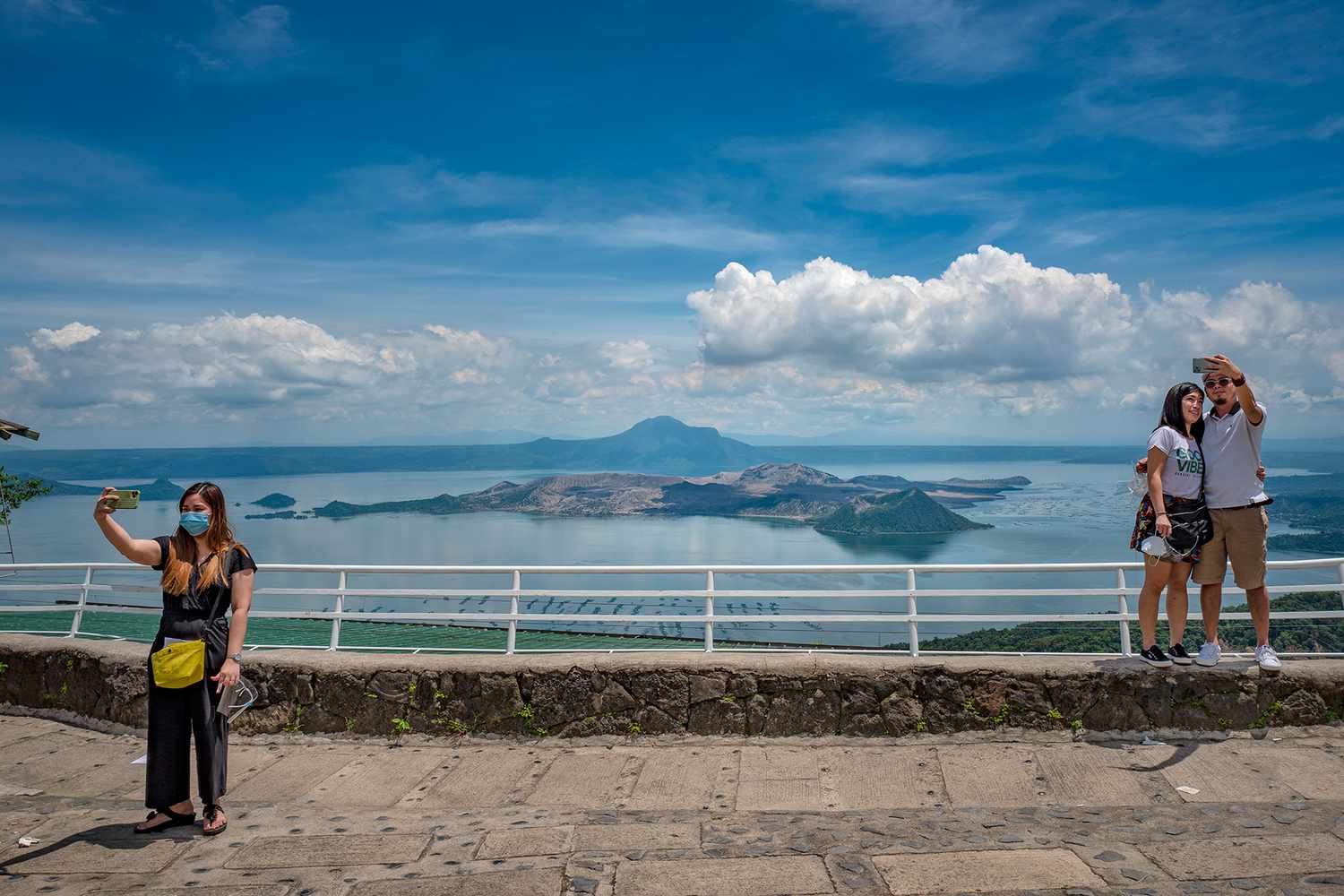
Pre-colonial era: Indigenous tribes and kingdoms
Before the arrival of European colonizers, the Philippines was a land teeming with diverse indigenous tribes and thriving kingdoms. These tribes, such as the Tagalogs, Ilocanos, Visayans, and many others, had distinct cultures, languages, and social structures.
Each tribe had their own rulers or chieftains who governed their respective territories. These indigenous communities were highly organized and engaged in various activities such as agriculture, trade, and craftsmanship.
They cultivated rice in terraced fields, crafted intricate pottery and jewelry using locally available materials like clay and shells. Some tribes even had sophisticated systems of writing using syllabaries or scripts which are still being studied today.
Spanish colonization and its impact on culture, language, and religion
The Spanish colonization in the 16th century marked a significant turning point in Philippine history. Led by Ferdinand Magellan's expedition in 1521, Spain established its presence by colonizing various parts of the archipelago. The Spanish influence left an indelible mark on Filipino culture, language, religion.
Under Spanish rule for over three centuries, Catholicism became deeply ingrained into Filipino society. Churches were constructed all over the islands while religious rituals merged with traditional practices creating a unique blend of beliefs known as "folk Catholicism." The Spanish also introduced new crops like corn and tobacco while influencing local cuisine with ingredients such as garlic and onions.
The Spanish colonization also brought about linguistic changes. The native languages incorporated many loanwords from Spanish resulting in modern-day Filipino which is predominantly based on Tagalog but incorporates loanwords from Spanish vocabulary.
American colonization and its influence on education government
Following the defeat of Spain during the Spanish-American War in 1898 came American colonization which lasted until 1946. The American influence had a profound impact on the Philippines, particularly in terms of education, government, and popular culture. One of the significant changes brought by the Americans was the introduction of a public education system.
English became the medium of instruction in schools, giving rise to a bilingual society where English and Filipino were both widely spoken. This emphasis on education led to higher literacy rates and improved access to knowledge for many Filipinos.
Additionally, American governance practices also influenced Philippine politics and administration. The country adopted a democratic system modeled after that of the United States.
The concept of political parties and procedures like elections were introduced, shaping the future trajectory of Philippine democracy. Moreover, American popular culture permeated Philippine society through various means such as movies, music, and fashion trends.
Hollywood films gained popularity among Filipinos while introducing new ideas and perspectives. Overall, both Spanish and American colonization left lasting legacies that shaped Filipino history as we know it today - from language to religion to political structures – making the Philippines a unique blend of Asian Pacific Islander cultures with influences from around the globe.
Filipino Identity and Characteristics
Bayanihan Spirit: Strong Sense of Community and Helping One Another
The Bayanihan spirit is deeply ingrained in the Filipino culture. It refers to the collective effort of a community in times of need, exemplifying unity, cooperation, and selflessness.
Filipinos are known for their willingness to lend a helping hand to their neighbors, friends, and even strangers. Whether it's assisting someone with household chores or coming together during calamities, the Bayanihan spirit binds Filipinos together.
In times of natural disasters such as typhoons or earthquakes, you can witness this spirit in action as communities mobilize to provide relief and support. They open their homes as temporary shelters, distribute food and supplies, and offer comfort to those affected.
The Bayanihan spirit extends beyond physical assistance; it also manifests in emotional support and encouragement. This shared responsibility creates a strong sense of belonging among Filipinos.
Resilience: Overcoming Challenges Such as Natural Disasters, Political Turmoil, etc.
The Philippines is no stranger to adversity. With its geographical location prone to typhoons and earthquakes, the country has faced numerous natural disasters throughout history. Despite these challenges, Filipinos display remarkable resilience time and again.
They bounce back from devastation with an unwavering determination to rebuild their lives. Political turmoil has also tested the resilience of Filipinos throughout the years.
From periods of martial law to political unrests, they have shown an indomitable spirit in pursuing justice and fighting for what they believe is right. Peaceful protests become avenues for expressing dissent while advocating for positive change.
This resilience stems from a deeply-rooted sense of hope that permeates Filipino society – a belief that better days will come despite difficult circumstances. It is this optimism that fuels their ability not only to survive but also to thrive amidst challenges.
Hospitality: Warm Welcome Extended to Visitors
When it comes to hospitality, Filipinos take great pride in making visitors feel at home. Whether you're a tourist exploring the stunning landscapes or a guest attending a family gathering, expect to be welcomed with open arms and genuine warmth. Filipinos are known for their friendly and outgoing nature.
They will go out of their way to ensure your comfort and enjoyment during your stay. From offering delicious home-cooked meals to providing recommendations on local attractions, they strive to create memorable experiences for their guests.
Hospitality is deeply ingrained in Filipino culture, often referred to as "pakikisama," which translates to an inclusive sense of camaraderie. Building relationships based on trust and respect is highly valued, whether it's with family, friends, or strangers.
The Filipino identity is shaped by the Bayanihan spirit that fosters unity and cooperation within communities. The resilience displayed by Filipinos in overcoming natural disasters and political turmoil showcases their unwavering determination.
Furthermore, the warm hospitality extended to visitors reflects their genuine desire to make others feel welcome and embraced. These characteristics encapsulate the essence of being Filipino – a people united by shared values and a deep sense of compassion for one another.
Traditional Filipino Cuisine

Adobo: Iconic dish made with marinated meat in soy sauce and vinegar
When it comes to Filipino cuisine, one dish that stands out as a true culinary masterpiece is adobo. This iconic dish is a tantalizing blend of flavors and textures that has been passed down through generations.
Adobo typically consists of marinated meat, such as chicken or pork, cooked slowly in a mixture of soy sauce and vinegar. The combination of these two ingredients creates a delectable harmony between the savory notes of the soy sauce and the tangy acidity of the vinegar.
What makes adobo truly special is its versatility. Every family has their own unique twist on this dish, adding various spices and seasonings to enhance the flavor profile.
Some may choose to include garlic, bay leaves, or even brown sugar to add depth and richness. The meat is often simmered in the marinade until it becomes tender and succulent, resulting in a melt-in-your-mouth experience that is hard to resist.
Sinigang: Sour soup made with tamarind or other souring agents
If you're craving something sour yet comforting, look no further than sinigang. This delicious soup is a staple in Filipino households and offers a distinctive blend of tartness and savory goodness. Sinigang gets its signature sour taste from tamarind pulp or other souring agents such as guava or kamias (bilimbi).
The base for sinigang usually consists of meat, commonly pork or shrimp, along with an assortment of vegetables like kangkong (water spinach), eggplant, radish, and tomatoes. The combination of these ingredients creates a harmonious balance between the tangy broth and the natural sweetness of the vegetables.
Not only does sinigang tantalize your taste buds with its burst of flavors, but it also offers a refreshing and comforting experience. The aroma of the soup as it simmers on the stove is enough to make your mouth water, and once you take that first spoonful, you'll be transported to a world of culinary bliss.
Lechon: Whole roasted pig, often served during festive occasions
When it comes to grand celebrations in the Philippines, no feast is complete without a centerpiece that steals the show - lechon. This whole roasted pig is a true embodiment of Filipino gastronomy and has become synonymous with festive occasions such as birthdays, weddings, and fiestas. Preparing lechon is no simple feat; it requires hours of laborious preparation.
The pig is marinated with a special blend of spices and seasonings before being slow-roasted over an open fire or in a specialized oven. This cooking method ensures that the skin turns irresistibly golden brown and incredibly crispy while the meat inside remains tender and juicy.
The result is an explosion of flavors with each bite - succulent meat infused with aromatic herbs and spices complemented by the tantalizing crunch of perfectly crackling skin. Lechon truly showcases the culinary prowess of Filipino cuisine and exemplifies the spirit of celebration ingrained in Filipino culture.
Whether you're savoring adobo's rich umami flavors or indulging in sinigang's sour tanginess or reveling in the succulence of lechon's juicy meat, traditional Filipino cuisine offers an array of delightful dishes that are sure to leave you craving for more. These iconic dishes not only represent the rich culinary heritage but also reflect the warmth and hospitality deeply embedded in Filipino culture.
Festivals in the Philippines
Sinulog Festival in Cebu City: Celebrating Santo Niño with colorful street dances
The Sinulog Festival, held annually on the third Sunday of January in Cebu City, is one of the most vibrant and exciting festivals in the Philippines. It is a celebration of the Santo Niño, or the Child Jesus, and showcases a unique blend of religious devotion and joyful revelry.
The festival's highlight is the grand street parade, where thousands of participants clad in colorful traditional attire dance to rhythmic beats, chanting "Pit Señor!" which means "Hail, Lord!" The streets come alive with energy as performers showcase their intricate dance moves and mesmerizing choreography. People from all walks of life gather to witness this spectacle and immerse themselves in an atmosphere filled with music, laughter, and pure joy.
Pahiyas Festival in Lucban, Quezon: Showcasing decorated houses with rice grains
Imagine walking through a street adorned with vibrant decorations made entirely out of rice grains. That's what you'll experience at the Pahiyas Festival in Lucban, Quezon province.
Celebrated every 15th of May to honor San Isidro Labrador, the patron saint of farmers, this festival is a visual feast for visitors. Locals showcase their creativity by adorning their houses with colorful rice wafers called "kiping," which are shaped like leaves or flowers.
These kipings are usually arranged intricately on bamboo frames and hung outside homes like artwork displays. Additionally, colorful vegetables and other agricultural products are used to create stunning designs that reflect Filipino ingenuity and agricultural abundance.
Panagbenga Festival in Baguio City: Flower festival featuring elaborate floats
Dubbed as the "Flower Capital of the Philippines," Baguio City hosts the Panagbenga Festival, a month-long extravaganza celebrating its blooming flower industry. This festival, held every February, showcases colorful floats adorned with a variety of flowers parading along the city's main streets. The floats are meticulously decorated with vibrant blooms, forming breathtaking displays of art and nature combined.
Alongside the procession of floats, street dancers in floral-themed costumes gracefully move to music beats, adding an extra touch of elegance to the festivities. The scent of flowers fills the air as both locals and tourists immerse themselves in this floral wonderland.
These festivals represent just a glimpse into the rich cultural tapestry that blankets the Philippines. From grand processions to creative displays, these celebrations not only highlight Filipino traditions but also foster unity and camaraderie among communities.
Attending one of these festivals provides an immersive experience that allows visitors to witness firsthand the vibrant spirit and artistic talents that define Filipino culture. So, if you're ever in the Philippines during these festivities, be sure to join in on the fun and create lasting memories filled with color, laughter, and cultural appreciation.
Tourist Destinations in the Philippines
Boracay Island: Famous for its white sandy beaches and crystal-clear waters
Located in the Western Visayas region, Boracay Island is renowned worldwide for its pristine white sandy beaches and crystal-clear turquoise waters. It has consistently been voted as one of the best beaches in the world and attracts millions of visitors each year. Besides its picture-perfect beauty, Boracay also offers a vibrant nightlife scene, water activities like snorkeling and scuba diving, and a wide range of hotels, resorts, and restaurants to cater to all types of travelers.
One of the main attractions on Boracay Island is White Beach, a four-kilometer stretch of powdery white sand lined with palm trees. Here, you can relax under an umbrella while enjoying a fresh coconut drink or take long leisurely walks along the shore at sunset.
For thrill-seekers, Bulabog Beach on the eastern side of the island is known for its strong winds, making it ideal for kiteboarding and windsurfing. And when you're ready to indulge your taste buds, D'Mall offers a plethora of dining options ranging from local street food to international cuisine.
Chocolate Hills in Bohol: Unique geological formation of over 1,000 hills
Bohol's Chocolate Hills are an extraordinary natural wonder that will leave you awestruck. Spread across an area of more than 50 square kilometers in Central Visayas, these unique geological formations consist of over 1,000 perfectly cone-shaped hills that turn chocolate brown during dry season – hence their name.
The hills are covered with lush green grass during wet season but transform into a mesmerizing shade that resembles giant chocolate kisses during summer. To fully appreciate this marvel from different vantage points, climb up to one of the designated viewing decks or take a scenic hike to the top.
The panoramic view of the seemingly endless rows of hills is absolutely breathtaking and offers a once-in-a-lifetime photo opportunity. Another way to experience the Chocolate Hills up close is by embarking on an ATV (all-terrain vehicle) adventure, where you can navigate through winding dirt trails and feel an adrenaline rush as you conquer both uphill and downhill paths.
Palawan Underground River: UNESCO World Heritage Site known for its stunning cave system
Considered as one of the New 7 Wonders of Nature, the Palawan Underground River in Puerto Princesa, Palawan is a UNESCO World Heritage Site that boasts a magnificent cave system. This subterranean river stretches over eight kilometers and winds its way through awe-inspiring limestone formations, including stalactites and stalagmites that have been shaped over millions of years.
Exploring this enchanting wonder will take you on an unforgettable underground boat tour where you'll witness nature's masterpiece. As you glide along the river inside the pitch-black cave, your guide will use a spotlight to illuminate various formations, revealing intricate shapes resembling animals or religious figures.
Look out for notable landmarks like the 'Cathedral' with its soaring ceilings or 'The Last Supper', which resembles Da Vinci's famous painting. The eerie silence broken only by whispers adds an air of mystery to this unique adventure.
Be prepared to be captivated by the natural beauty and serenity that envelops you throughout this remarkable journey. When it comes to tourist destinations in the Philippines, Boracay Island offers stunning beaches and exciting nightlife, while Bohol's Chocolate Hills amaze with their otherworldly appearance.
Exploring Palawan Underground River takes you into a mystical realm filled with captivating limestone formations. Each destination provides a distinct experience that showcases the natural wonders of this beautiful archipelago in Southeast Asia.
Traditions
Ancient Traditions Preserved in Modern Times
The Philippines is a country deeply rooted in tradition and customs that have been passed down through generations. One of the most prominent traditional practices is the "Pamanhikan," which is the formal gathering of the groom's family to ask for the bride's hand in marriage.
This event demonstrates respect for elders and emphasizes the importance of family unity. Another cherished tradition is the "Baybayin," an ancient script that pre-dates Spanish colonization.
The Baybayin is making a comeback, with many Filipinos embracing it as a way to reconnect with their cultural heritage. The Filipino martial art of Arnis, also known as Eskrima or Kali, has gained international recognition for its practicality and effectiveness.
This traditional practice involves using sticks or bladed weapons in combat, but it also teaches discipline and mental focus. Many schools across the Philippines offer Arnis classes to preserve this cultural treasure.
Folklore: Legends and Mythology
Filipino folklore is rich with captivating legends and mythical creatures. One popular legend tells of Maria Makiling, a beautiful goddess who resides on Mount Makiling.
She is believed to be a protector of nature and brings good fortune to those who respect her domain. Another well-known figure from Filipino mythology is the Aswang, a shape-shifting creature that feeds on human flesh, often associated with tales of horror and mystery.
Traditional dances such as tinikling showcase not only artistic expression but also agility and coordination. This dance involves performers skillfully maneuvering between bamboo poles while creating rhythmic beats by tapping them together—a true spectacle that reflects both history and culture.
Arts and Crafts: Preserving Cultural Heritage
Filipino artistry can be seen through various forms such as pottery, weaving, woodcarving, and embroidery. The province of Ilocos Norte is renowned for its Abel Iloco fabric, intricately woven using traditional looms.
In the southern part of the country, the T’boli tribe is known for their vibrant T'nalak cloth made from abaca fibers and naturally dyed with intricate patterns. Woodcarving is another artistic tradition that thrives in the Philippines.
The Ifugao people carve beautiful bulul figures, which are rice deities believed to bring abundance and fertility to their farms. These impressive sculptures represent both cultural heritage and religious beliefs.
Conclusion
The Philippines, as an Asian Pacific Islander nation, stands as a vibrant tapestry of traditions, folklore, arts, and crafts that have been passed down through generations. Despite modernization and external influences over the years, Filipinos have managed to preserve their rich cultural heritage through various means. From ancient practices like Pamanhikan and Baybayin to captivating legends like Maria Makiling and Aswang, these traditions continue to shape Filipino identity and contribute to an enchanting narrative that reflects history and mythology.
Through arts such as Arnis martial arts, tinikling dances showcasing agility, creativity in various crafts such as Abel Iloco weaving or woodcarvings of bulul figures – Filipino artistry continues to flourish while preserving cultural roots. The resilience of Filipinos in preserving their traditions while embracing progress is a testament to their enduring spirit.
With each passing generation, these traditions serve not only as a link to the past but also as a source of inspiration for future endeavors. Embracing Filipino heritage fosters diversity appreciation globally while reminding us all of the beauty found within our distinct cultures.



